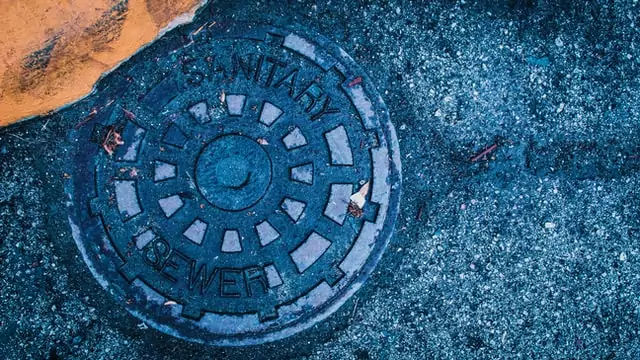A sewer backup creates a stressful and emotional situation for homeowners or renters. Although the Village makes every effort to prevent such incidents, they may still occur. The following information supplements the sewer line information published in each issue of Village Voices and is intended to help property owners and residents understand why backups happen, how they can be prevented, and what steps to take if a sewer backup affects their property.
What Causes a Sewer Backup?
Sanitary sewer overflows can be caused by a number of factors. They usually involve sewer pipe blockages in either main sewer lines or service laterals (lines between the building and the main line). Causes may include pipe breaks or cracks due to tree roots, system deterioration, insufficient system capacity due to residential or commercial growth, or construction mishaps. More often than not, however, the cause of a backup in a service lateral is from items that the line is not meant to handle, such as toys, grease, underwear, towels, diapers, paper products (other than toilet paper), keys, and other items. Another common cause of blockages involves vandalism – leaves, sticks, rocks, bricks, trash and even toolboxes have been found stuffed down manholes. What you flush down your toilet may not affect you, but it might cause problems for your neighbors!
What Should I Do If Sewage Backs Up Into My House?
- Notify the Village FIRST at 607 547-2411 for both daytime and after-hours incidents. (Weekends included)
- Take action to protect people and valuable property. Keeping in mind that ceramic plumbing fixtures such as toilets are fragile, promptly close all drain openings with stoppers or plugs. A string mop can be used to help plug toilet openings. Tub, sink, and floor drains may need additional weight to keep them sealed.
- Don’t run any water down your drains until the blockage has been cleared.
- Check with neighbors to help determine if the backup appears to be in your neighbor’s wastewater line and/or widespread in your neighborhood.
- Call a plumber if you know that the problem is in your lateral service line.
- To minimize damage and negative health effects, arrange for cleanup of the property as soon as possible.
What Will The Village Do About A Sewer Backup On My Property?
- Village personnel will ask about the backup timing, location, the property at risk etc.
- Village personnel will check for blockages in the main line. If found, the Village will clear the blockage in the main line as soon as possible. This is a free service to you and enables you to avoid costly, unnecessary plumbing and repair bills.
- If the main line is not blocked, you will be advised to call a plumbing or sewer contractor to check your lateral line. Maintenance and repair of the lateral line are the owner’s responsibility.
- To minimize damage and negative health effects, you should arrange for cleanup of the property as soon as possible.
Will Insurance Cover Any Damage To My Home or Property?
Confer with your insurance agent to determine what coverage is provided under your existing policy and what additional coverage, if any, is needed to insure against sewer back up damages.
Confer with Village about the extent to which Village insurance will cover your losses and damages from a sewer blockage.
Should I Install Backflow Prevention Valve?
A backflow valve, or a check valve, can prevent or greatly reduce the possibility of a sewer backup. A backflow valve is a fixture installed into a sewer line, and sometimes in a drain line, in the basement of your building to prevent sewer backflows. A properly installed and maintained backflow valve works on a one-way system: sewage can go out, but cannot come back in. Property owners are responsible for the installation and maintenance of backflow valves. The cost to install one is dependent upon the type of plumbing in your home and the difficulty of installation. A qualified plumber can assist you in determining your needs.
**Remember the following steps**:
- Call the Village FIRST at 607 547-2411 immediately if
you experience a sewer backup.
- Contact your insurance company and see if you are insured against
sewer backup costs.
- If you are not insured, consider purchasing additional coverage for
incidents that are not the Village’s responsibility.


